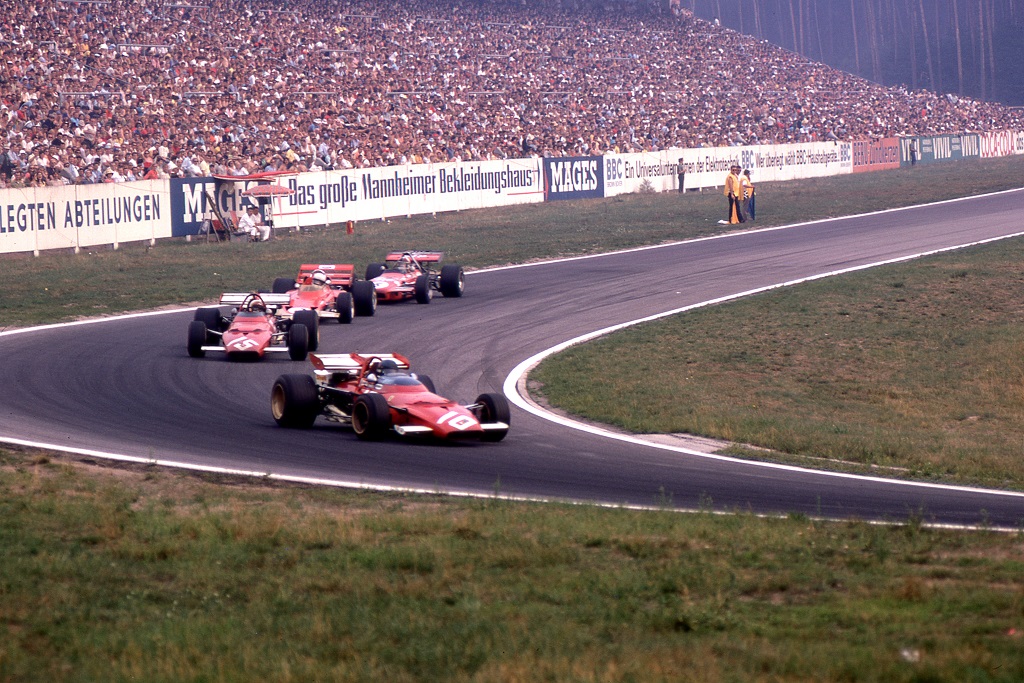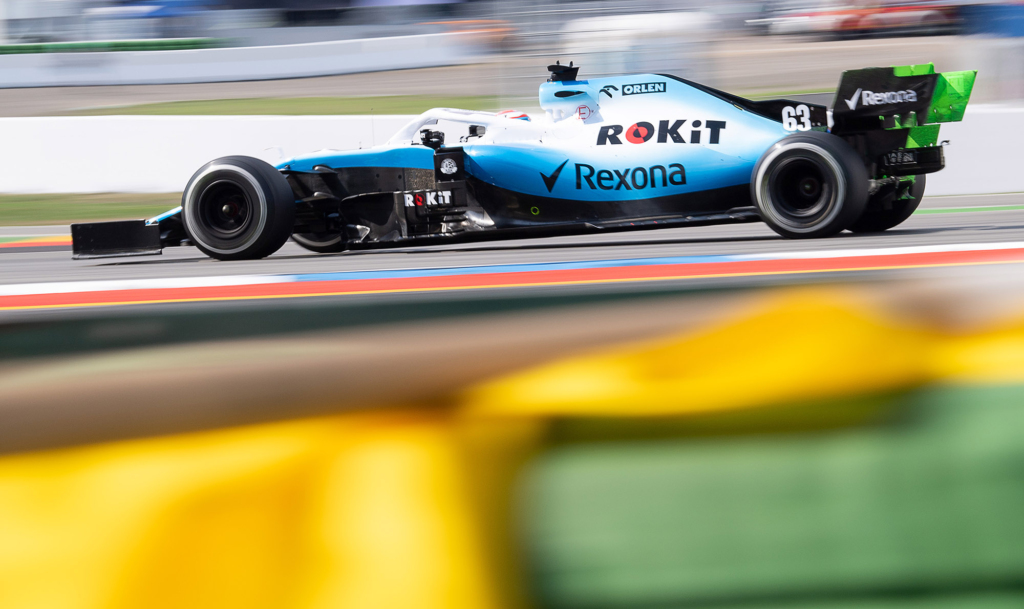The Hockenheimring circuit in southwest Germany has a rich history in motorsports, especially Formula One. First built in 1932, the track has gone through many layout changes over its nine decade existence to both improve safety and adapt to the evolving needs of racing.
The Early Years: 1932-2001
The Hockenheimring was originally constructed in 1932 as a fast triangle course winding through forest roads near the town of Hockenheim. In 1938, the layout was altered to the faster, more familiar oval shape that would define the circuit for over 60 years. However, World War II severely damaged the track, and after the war ended major reconstruction efforts began. The track reopened in 1947 and started hosting national racing events again.
Further improvements were made over the next few decades, including added grandstands and pit facilities. Tragedy struck in 1968 when Formula One legend Jim Clark was killed in a crash during a Formula Two race. In remembrance, a small memorial stone was placed in the forest near the crash site.
In 1970, renovations were undertaken to prepare the track for its first German Grand Prix as a replacement host for the Nürburgring. New chicanes were added through the long forest sections to try and improve safety. Over the next 30 years, additional minor tweaks were implemented like tightened turns and new chicanes. But the track layout remained largely unchanged, featuring long straights for high speeds punctuated by a few sharp bends.

The Tilke Redesign: 2002-Present
By the late 1990s, the FIA started demanding alterations to Hockenheim in order for it to continue hosting Formula One. The near 7km circuit was deemed too long, and the forest sections made for poor visibility. So in 2002, a massive renovation headed by designer Hermann Tilke got underway. The update came with a hefty price tag – 62 million Euros.
The once distinctive track layout was considerably shortened and tamed. The sweeping forest sections were removed entirely and replanted with trees. Though this improved visibility for fans and opened up more overtaking opportunities, many lamented the loss of the track’s high speed character. In fielding criticism, circuit officials noted the redesign was necessary to meet modern safety standards and keep the German Grand Prix. The renovation also enabled capacity expansion up to 120,000 spectators.
Financial Losses and the Future
Unfortunately for Hockenheim, the significant investment into the redesign put the circuit deep into debt. Annual losses for each Formula One race ranged from 3 million to over 5 million Euros. These deficits had to be offset by regional government support. In an attempt to alleviate the financial drain, Hockenheim came to an agreement with the Nürburgring to alternate hosting the German Grand Prix each year beginning in 2007. However, declining attendance and revenue meant this compromise could not sustain the race’s future.
Hockenheim does still actively seek to bring Formula One back, with the circuit director open to creative solutions like biennial race rotations. But there is still great hesitancy to commit unless a profitable and sustainable plan can be structured with Formula One Management. For now, Hockenheim continues to host various other motorsport series. But the dream persists that one day Formula One cars will again race at full throttle onto the home straight through the forest, continuing Hockenheimring’s storied history.
Memorable Hockenheim Moments
While perhaps not as iconic as tracks like Monza, Monaco, and Silverstone, the Hockenheimring has still been host to many memorable Formula One moments over the years.
1968 – Death of Jim Clark
In one of racing’s great tragedies, legendary driver Jim Clark lost his life in a crash during a Formula 2 race in April 1968. It was a pivotal point for improving safety in the sport. Clark was a champion who transcended Formula One, and the memorial stone placed trackside in the forest serves as a tribute to his lasting legacy.
1982 – Piquet’s Revenge
The 1982 German Grand Prix has become infamous in Formula One folklore. Earlier in the race, leader Nelson Piquet was crashed into by backmarker Eliseo Salazar while lapping him. The incensed Piquet stormed over to Salazar and punched and kicked him, live on television. It highlighted the passion and danger in the sport, albeit in an ugly display of misdirected rage.
1991 – Senna and Mansell’s Duel
The 1991 German Grand Prix showcased a titanic battle between fierce rivals Ayrton Senna and Nigel Mansell. The two traded places several times in a thrilling display of aggressive and courageous driving. Mansell finally got the better of Senna in the closing stages to claim victory.
2019 – Dramatic Pit Lane Chaos
The 2019 race lives long in infamy thanks to a nightmare pit stop for Lewis Hamilton. A slow tire change was followed by a chaotic scramble as mechanics searched for a a different tyre set. Total lack of communication in their home Grand Prix, while celebrating an anniversary of Mercedes starts in Formula 1. Hamilton lost over a minute sitting stationary, allowing Max Verstappen to take the win, despite spinning on the slippery surface. The 2019 Grand Prix marks the only point scored by Williams in 2019. With 8 DNFs, Robert Kubica stayed close to the pack, and despite initially finishing outside of points, he has been promoted to P10 due to penalties for Alfa Romeo.

The Hockenheimring of the Future
Hockenheimring’s journey has traced the trajectory of Formula One itself – constantly evolving to meet new challenges. Financial viability and environmental sustainability are crucial hurdles in determining the next phase of its legacy. But despite uncertainties, the passion for racing at Hockenheim endures. Given the circuit’s rich history, few would be surprised if this phoenix rises yet again.

